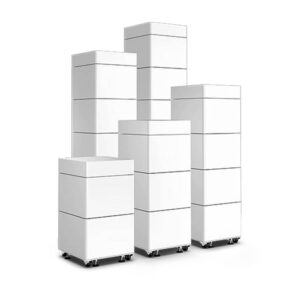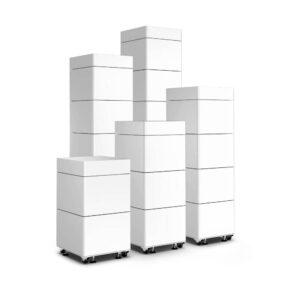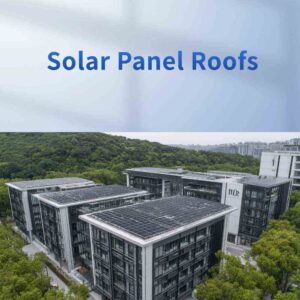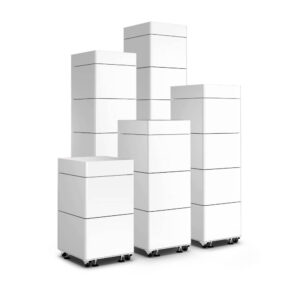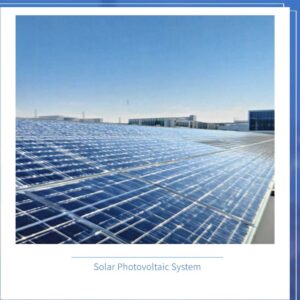Imagine sunlight shining on your solar panels. You may think the job is finished. But the real work happens in your photovoltaic inverter. This device changes solar energy from DC to AC power for your house. The inverter you pick affects how much energy you save. It also affects how reliable your system is.
- Advanced inverters help control changes in solar energy. This protects your equipment and stops power outages.
- They also control electricity flow to keep the grid steady.
| Scenario | 説明 | Impact on Inverter Lifespan |
|---|---|---|
| Fixed PV Degradation Rate | Inverter works without thinking about climate effects | Normal lifespan |
| Climate-Based Degradation Rate | Lifespan guessed using climate models | Longer lifespan in some places |
| No PV Degradation Considered | Inverter works without any wear and tear counted | Shorter lifespan |
要点
- Photovoltaic inverters change solar energy from DC to AC power. This makes the power useful for homes and the grid.
- Picking a good inverter can help you save money over time. Try to find models with efficiency ratings higher than 96%.
- Inverters have safety features like arc fault protection. They also have rapid shutdown systems. These help keep your home safe from electrical dangers.
- Doing regular maintenance and updating the software on your inverter is important. This can stop expensive repairs and keep it working well.
- Always make sure your inverter size matches your solar panel output. This helps you avoid losing energy and keeps things working right.
Photovoltaic inverter basics
DC to AC conversion
Solar panels make DC electricity when the sun shines on them. But your house and the grid need AC electricity. The photovoltaic inverter helps change DC into AC.
Here is how it works:
- DC Power from Solar Panels: Sunlight hits the panels. This makes electrons move. The movement creates DC electricity.
- Conversion to AC Power: The inverter has switches and transistors. These parts turn on and off very fast. This action changes DC into AC. It makes a wave that looks like AC power.
- Filtering and Refining: The inverter smooths the wave. Filters help make the AC steady and clean. This step gives your devices good electricity.
ヒント The inverter does not change all the energy. Some energy turns into heat and is lost. Most inverters work at 80% to 95% efficiency. You lose about 5% to 20% of the energy. Most losses come from switching and wires.
Why inverters matter
A photovoltaic inverter does more than just change DC to AC. It is like the brain of your solar system. It does many important things:
- Changes DC from panels into AC for your house and the grid.
- Finds the best power point (MPPT) to get the most energy.
- Controls power during the day. It turns on and off when needed.
- Looks for islanding effects. This keeps your system safe if the grid stops.
Without an inverter, your solar panels cannot power your house or send energy to the grid. The inverter keeps your system safe and working well.
Grid compliance
Your photovoltaic inverter must follow special rules to connect to the grid. These rules keep the grid safe and steady. Different places have their own standards.
| Region | Standards |
|---|---|
| North America | IEEE 1547, IEEE 1547.1, UL 1741 section SB |
| Europe | EN 50549, VDE 4105, UK G99, CEI 0-21 |
| International | IEC 61727, IEC 62116 |
Grid rules affect how you pick and use your inverter. You need to check these things:
- Voltage and Frequency Control: Your system must stay in the right voltage and frequency range.
- Power Factor and Reactive Power: The inverter should help with reactive power and keep the power factor steady.
- Harmonic Distortion and Power Quality: Your system must lower distortion and keep power quality high.
- Fault Ride-Through Capability: The inverter should stay on during grid problems and help the grid get better.
If your inverter does not follow these rules, you cannot connect your solar system to the grid. Always check local rules before you buy an inverter.
Key features and performance
効率性
You want your solar system to work well. The efficiency of your photovoltaic inverter decides how much solar energy you use. Modern inverters are very efficient. They work between 96% and 99%. Even a small change in efficiency, like 3%, can save you a lot of money over time. If you pick an inverter that is not as efficient, you might pay more for energy.
- SMA’s Sunny Boy series works above 97.5% efficiency.
- Enphase IQ8 microinverters reach up to 97% CEC efficiency.
- Fronius Primo models show 96.5% to 97% efficiency.
- SolarEdge HD-Wave inverters can reach up to 99% efficiency.
Higher efficiency means more solar power becomes electricity you can use. You get better results and save more money as time goes on.
ヒント Always look at the efficiency rating before you buy. A higher rating means more energy for your house.
MPPT technology
Maximum Power Point Tracking (MPPT) helps your solar panels work their best. MPPT keeps changing the operating point so your panels make the most power. This helps you get more energy from the sun.
Modern MPPT algorithms, like incremental conductance and perturb and observe, find the best power point quickly and well. Some inverters can track more than one string of panels at the same time. If one string gets shade, the other strings keep working. Advanced systems use real-time monitoring to adjust for sunlight or temperature changes.
MPPT lowers the work your inverter has to do and helps it run better. You get more energy and your solar system works better.
Safety protections
Safety is important when you use solar electricity. Photovoltaic inverters have many features to keep you and your home safe.
| Safety Feature | 説明 |
|---|---|
| Arc Fault Circuit Interrupters (AFCI) | Find and stop dangerous arc faults before they get worse. |
| Rapid Shutdown Systems | Let solar arrays be turned off fast in emergencies. |
| Ground-Fault Protection | Stops the circuit if there is a fault to prevent shocks and fires. |
| Temperature Sensors and Automatic Cooling | Stop overheating by changing load or shutting down when it gets too hot. |
| Smart Monitoring Software | Gives real-time alerts and performance updates through apps for quick help. |
| Anti-Islanding Functionality | Stops power right away if the grid fails. |
| Harmonics Control | Limits electrical noise that could bother sensitive devices. |
| Voltage and Frequency Regulation | Keeps output safe to protect your house and the grid. |
You should also look for disconnect switches that are easy to use and clearly labeled. Make sure grounding wires are big enough for high currents. These features help stop electrical dangers and keep your solar system safe.
Types of photovoltaic inverter
Picking the right type of photovoltaic inverter helps your solar system work well. It also helps your system last longer. Each type is good for different places and needs. You should learn how each one works before you choose.
Grid-tie
A grid-tie inverter links your solar panels to the public power grid. You use this type if you have grid access and want lower bills. Many homes and businesses use grid-tie inverters. They are simple and cost less than other types.
| Characteristic/Advantage | 説明 |
|---|---|
| Low Distortion Rate | Keeps energy clean and steady. |
| High Voltage Regulation | Makes voltage steady for your devices. |
| High Efficiency | Gets the most power from your solar panels. |
| High Reliability | Has safety features for smooth operation. |
| Wide Adaptability | Works with many sizes of solar systems. |
| Cost-Effective | No batteries needed, so you save money. |
| Reduced Electricity Bills | Lets you sell extra power to the grid. |
| Low Maintenance | Needs little care after setup. |
| Sustainability | Helps the planet by lowering carbon emissions. |
Pick a grid-tie inverter if you want to save money and help the earth. It works best for homes and businesses with steady grid access.
Off-grid
An off-grid inverter works without any link to the public grid. You use this type if you live far away or want full energy freedom. Off-grid inverters need batteries to store power for night or cloudy days.
| アスペクト | Grid-Tie Inverter | Off-Grid Inverter |
|---|---|---|
| Design | Uses grid for voltage and frequency | Makes its own voltage and frequency |
| Functionality | Sends all power to the grid | Gives only the power you need |
Off-grid inverters give you freedom from the grid. But you must watch your power supply. You need to check battery levels and plan for cloudy days.
Hybrid
A hybrid inverter mixes the best parts of grid-tie and off-grid systems. You can use solar power, store energy in batteries, and connect to the grid. This type gives backup power during outages. It helps you use solar energy better.
| Advantages | Disadvantages |
|---|---|
| 効率性 | Upgrading needs extra work |
| Backup Power | Some limit backup during outages |
| Affordability | More complex to install and maintain |
| High-Tech Efficiency Monitoring |
Advantages:
- Keeps your lights on during blackouts.
- Uses solar energy well in all weather.
- Lowers your long-term maintenance costs.
Disadvantages:
- Costs more to install at first.
- Needs careful setup and control.
- Batteries may not last as long in tough weather.
Picking the right inverter helps your system fit your needs. It protects your investment and gives the best results. Always check if the inverter matches your solar panel size, voltage, and power needs. Real-time monitoring helps you find problems early and keeps your system working well.
Reliability and longevity
Lifespan
You want your solar system to last a long time. The inverter type you pick matters. Most string inverters work for 10 to 15 years. Microinverters can last up to 25 years. Microinverters break less often than string inverters. You might need to change a string inverter before your panels wear out. Microinverters often last as long as the solar panels.
| Inverter Type | Typical Lifespan |
|---|---|
| String Inverters | 10-15 years |
| Microinverters | Up to 25 years |
- String inverters usually need to be replaced first.
- Microinverters can work for many years with fewer issues.
Warranties
Warranties help protect your money and give you comfort. Top brands offer different warranty times. SMA gives a 10-year warranty. You can add 5 or 10 more years. In 2025, SMA will give a 15-year warranty for free. Other brands offer parts warranties from 10 to 25 years. Labor coverage can be free or cost up to $25 per hour for 5 years. Some companies cover roof holes and let you transfer ownership for a fee.
| Manufacturer | Standard Warranty | Extended Warranty Options |
|---|---|---|
| SMA | 10 years | 5 or 10 years extension, updated to 15 years at no additional cost for 2025 |
| Inverter Manufacturer | Parts Warranty | Labor Warranty | Roof Penetrations | Ownership Transfer |
|---|---|---|---|---|
| Various | 10-25 years | $0-$25/hr for 0-5 years | 0 years | Up to $399 |
Tip: Always read the warranty before you buy. Longer warranties can help you save money if something breaks.
メンテナンス
Taking care of your photovoltaic inverter helps it last longer. You should check how it works and keep a log of fixes. This helps you find problems early and plan repairs. Keep your inverter safe from heat and water. Check the temperature and humidity often. Update the software when new versions come out. This keeps your system safe and working well.
| Maintenance Practice | 説明 |
|---|---|
| Monitor Inverter Performance Data | Use lists and apps to track problems and downtime. |
| Keep a Maintenance Log | Write down tasks and times to find the best schedule. |
| Protect Against Environmental Factors | Watch temperature and humidity to keep the inverter safe. |
| Check for Firmware Updates | Update software to get new features and fix bugs. |
Note: Good care can stop expensive problems and help your solar system work well for many years.
Common mistakes and misconceptions
Sizing errors
Some people think any inverter will work. This is not right. Picking the wrong size can waste energy. It can also cause problems. If your inverter is too small, it works too hard. You lose solar energy your panels make. If your inverter is too big, it does not work well in low sunlight. You lose efficiency and money.
| Sizing Error | 説明 |
|---|---|
| Undersizing | An undersized inverter may run at capacity, wasting solar energy produced by the panels. |
| Oversizing | An oversized inverter might operate inefficiently, especially in low-light conditions. |
| General Mistake | Choosing the wrong inverter size can lead to inefficiencies, system failures, or costly upgrades. |
Tip: Match your inverter size to your solar panel output. This helps you get the most energy. It also helps you avoid expensive repairs.
Compatibility issues
Your inverter must work with other solar parts. Mixing brands or using different voltage ratings can cause trouble. Some inverters do not work well with power optimizers. This can lower how well your system works. It can even make your system stop working. Voltage differences can hurt your equipment.
Common compatibility problems include:
- Brands may not talk to each other.
- Disconnecting power optimizers can confuse some inverters.
- Voltage differences can lower performance or damage PV parts.
Bad combinations can make your system work poorly. Tests show one in three setups lost a lot of power. High heat can lower efficiency by 15%. Cold can drop it by 10%. Bad matches break down more often. Some systems failed three times in one year.
Note: Always check your inverter matches your panels and other parts. This keeps your system working well and safe.
Neglecting updates
You might forget to update your inverter’s software. This can hurt safety and performance. Updates help your inverter run better. They add new safety features. If you skip updates, your system may break. You could lose money. Updates keep your solar system safe and strong.
- Firmware updates help inverters work well.
- New safety features stop problems and save money.
- Staying updated lowers risks and keeps your system safe.
Tip: Set reminders to check for updates. This easy step protects your investment. It keeps your solar system working well.
Advanced benefits
Smart features
Modern photovoltaic inverters have smart features. These features make your solar system easier to use. They also make it more reliable. You can watch your system in real time. You get alerts if something is wrong. Many inverters use special tools to talk to the grid and your devices. Some inverters use artificial intelligence. This helps them guess problems before they happen. You can fix issues early. Your system keeps working well. Homeowners save money each year because of these smart features.
| 特徴 | ベネフィット |
|---|---|
| Advanced communication capabilities | Lets the inverter talk to the grid for better results. |
| Voltage regulation | Keeps voltage steady so your system is safer. |
| Frequency support | Helps the grid stay balanced and stable. |
| AI integration | Finds when you need repairs and helps save energy. |
| Economic savings | Homeowners can save about $1,500 every year. |
Tip: Use your inverter’s app to check your system every week.
Energy management
You can use your inverter to help manage energy at home. Smart inverters balance how much power you use and when. They can change their output if the grid needs more or less power. This helps stop blackouts and keeps your lights on. Some inverters use AI to find the best way to use your solar energy. You can see your energy use with real-time data.
- Inverters help keep power steady and stop sudden changes.
- They join programs that change output when the grid needs it.
- Smart inverters work in Volt/VAR mode to control voltage and power.
| Functionality | 説明 |
|---|---|
| Power Quality Management | Fixes voltage problems and follows utility rules. |
| Real-time Monitoring | Lets you see how your system works and find problems fast. |
| Communication Capabilities | Connects your system to smart grids and apps. |
| Energy Optimization Algorithms | Uses AI to get the most power from your panels. |
| デマンドレスポンスへの参加 | Changes output to help the grid when needed. |
| Voltage Control and Reactive Power Management | Keeps voltage steady for a stronger grid. |
Grid support
Your photovoltaic inverter does more than power your home. It helps the whole grid stay strong and steady. Advanced inverters can give synthetic inertia. This helps balance the grid when things change fast. They also control frequency and voltage. This keeps the grid from getting too high or too low. Some inverters can help restart the grid after a blackout.
- Inverters give synthetic inertia to help the grid stay balanced.
- They control voltage and frequency very quickly.
- These systems react fast to grid problems and help the grid recover.
- Some inverters can help bring back power after blackouts.
- Inverters give dynamic reactive power, which helps keep voltage steady.
Note: Pick an inverter with good grid support features. This helps your system work well as energy needs change in the future.
You now understand how to pick and take care of a photovoltaic inverter. Always make sure your inverter fits your system. Keep it clean and check it often. Experts say:
- Put your inverter in a dry, cool place with good air flow.
- Look at the wires and check for error codes often.
- Get a professional to check your inverter every year.
Inverters change electricity from direct current to alternating current. They can break more often than solar panels. That is why you should buy high-quality inverters. Pick ones with long warranties and good certifications. Putting your inverter in shade or under cover helps it last longer. It keeps the temperature steady.
| Factor | How It Affects Your Choice |
|---|---|
| Initial Investment Costs | Shows how much money you need at first |
| Available Incentives | Helps you get more money back |
| Long-term Maintenance | Changes how much you pay over time |
Smart choices help you save money. They also keep your solar system working well for many years.
よくあるご質問
What size inverter do you need for your solar system?
You should match your inverter size to your solar panel output. Most homes use inverters between 3 kW and 10 kW. Check your panel’s total wattage and choose an inverter with a similar or slightly lower rating.
How often should you check or maintain your inverter?
Check your inverter every month. Look for error codes, dust, or loose wires. Clean the area around it. Schedule a professional inspection once a year for best results.
Can you use any inverter with any solar panel?
No, you cannot use any inverter with any panel. You must match voltage and current ratings. Always check the manufacturer’s compatibility chart before you buy.
What happens if your inverter stops working?
- Your solar panels will not send power to your home or the grid.
- You may see warning lights or error codes.
- Call a professional to check and repair the inverter.
Do inverters work during a power outage?
Most grid-tied inverters stop working during outages for safety. If you want backup power, choose a hybrid inverter with batteries. This setup keeps your lights on when the grid goes down.

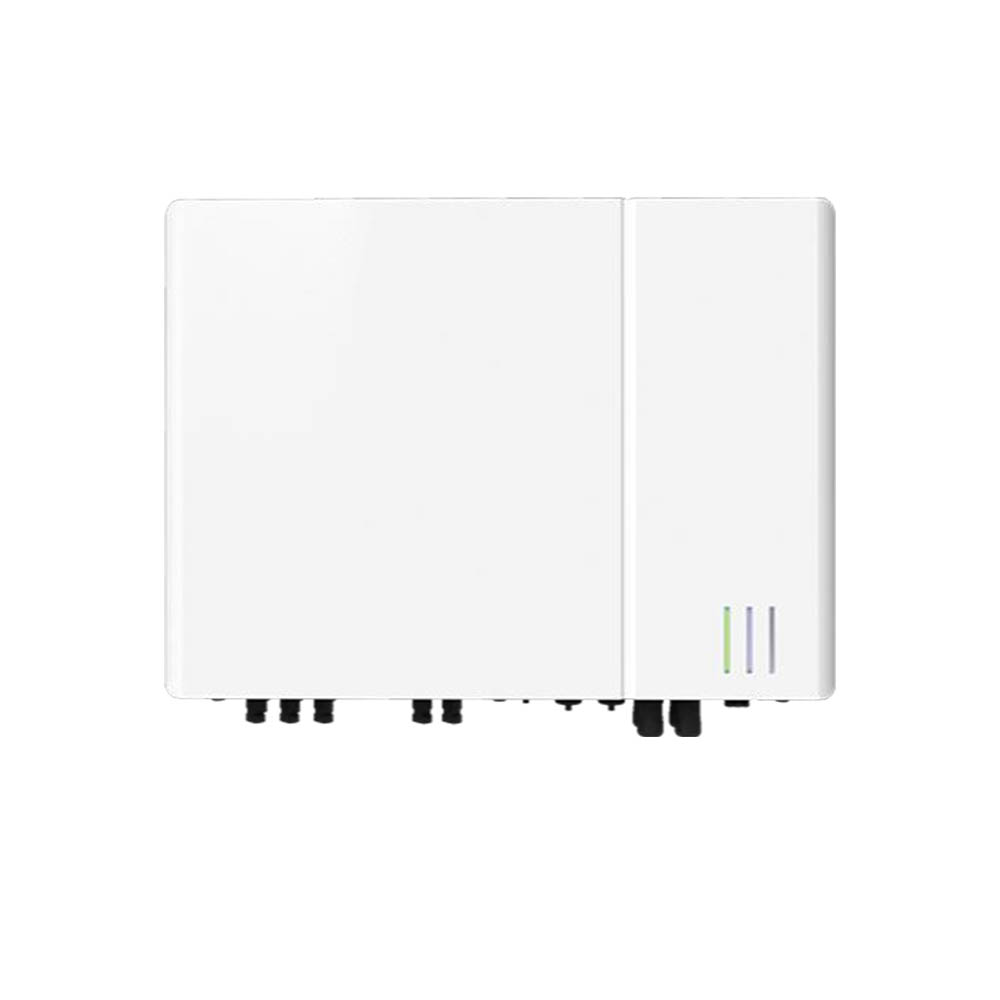
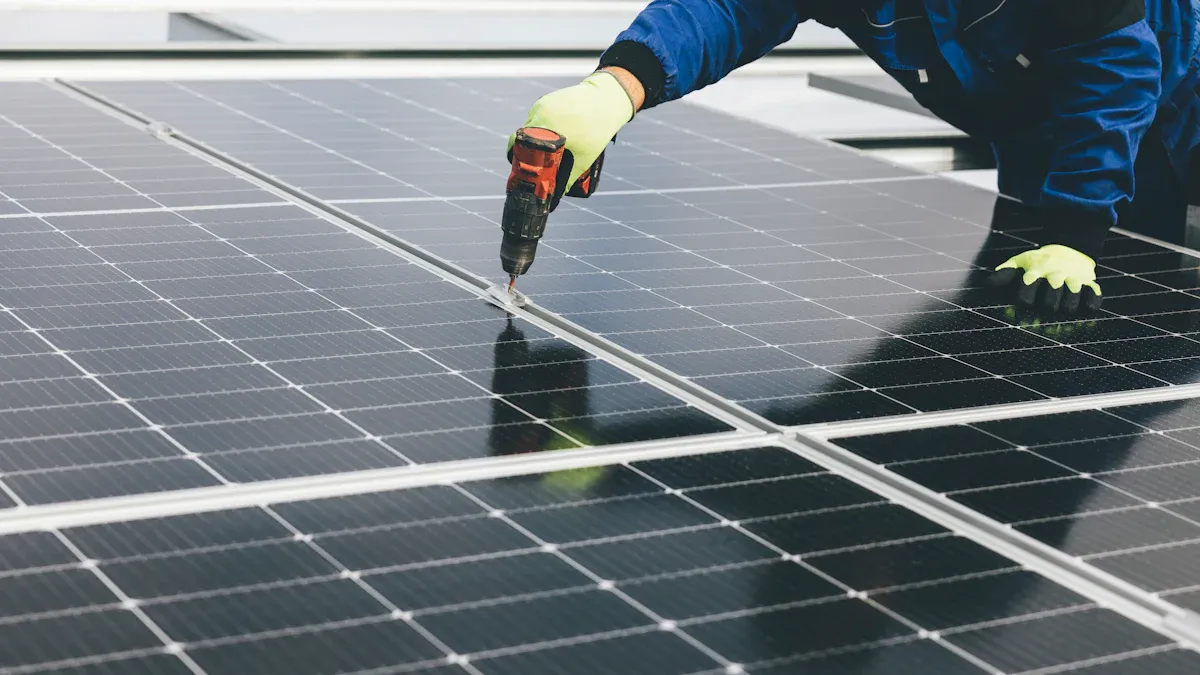
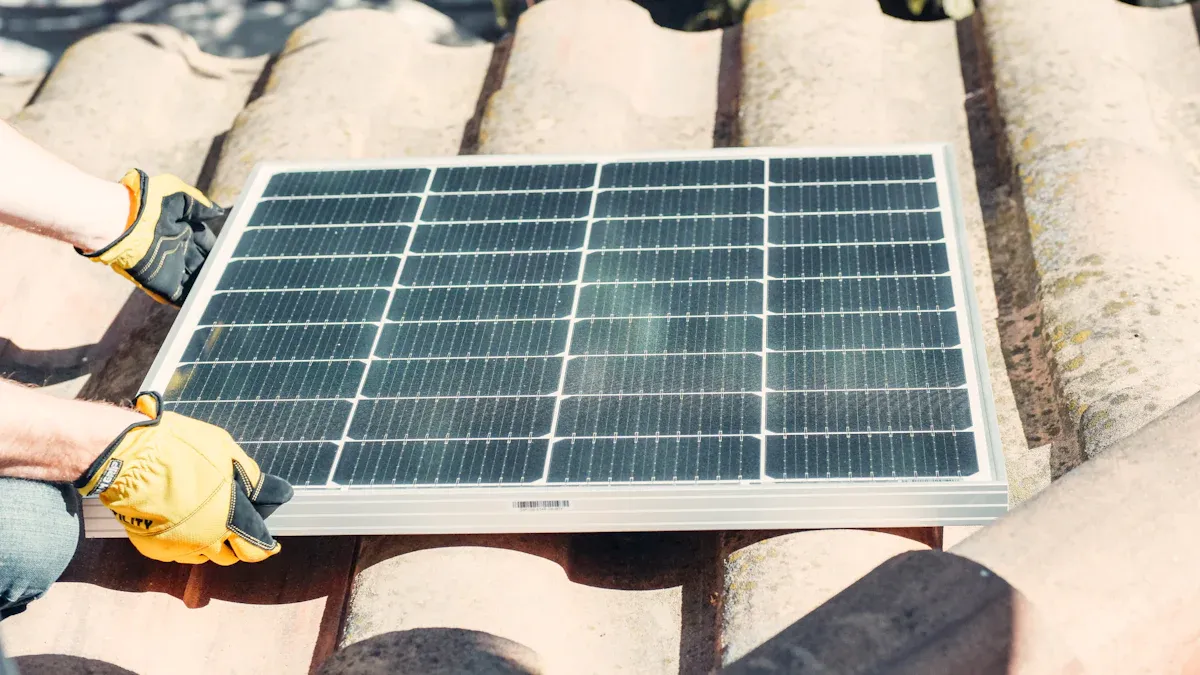



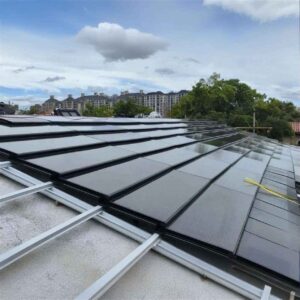
-300x300.jpg)
-300x300.jpg)
